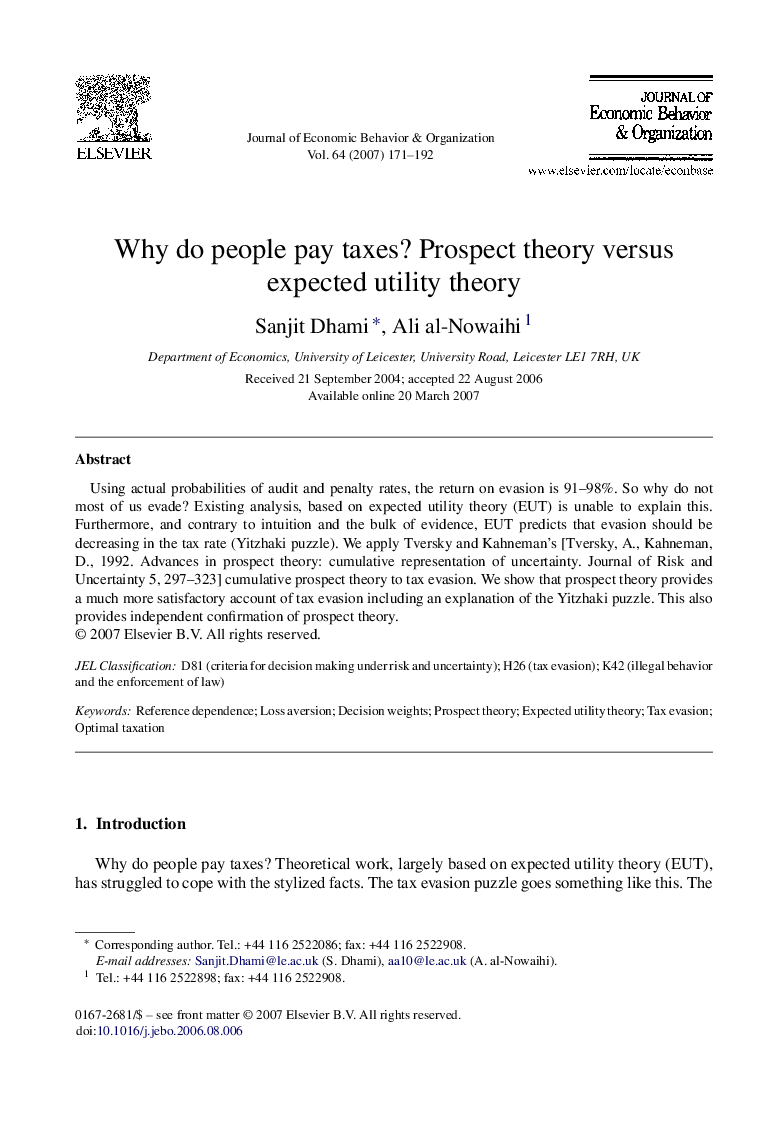| Article ID | Journal | Published Year | Pages | File Type |
|---|---|---|---|---|
| 884740 | Journal of Economic Behavior & Organization | 2007 | 22 Pages |
Using actual probabilities of audit and penalty rates, the return on evasion is 91–98%. So why do not most of us evade? Existing analysis, based on expected utility theory (EUT) is unable to explain this. Furthermore, and contrary to intuition and the bulk of evidence, EUT predicts that evasion should be decreasing in the tax rate (Yitzhaki puzzle). We apply Tversky and Kahneman’s [Tversky, A., Kahneman, D., 1992. Advances in prospect theory: cumulative representation of uncertainty. Journal of Risk and Uncertainty 5, 297–323] cumulative prospect theory to tax evasion. We show that prospect theory provides a much more satisfactory account of tax evasion including an explanation of the Yitzhaki puzzle. This also provides independent confirmation of prospect theory.
